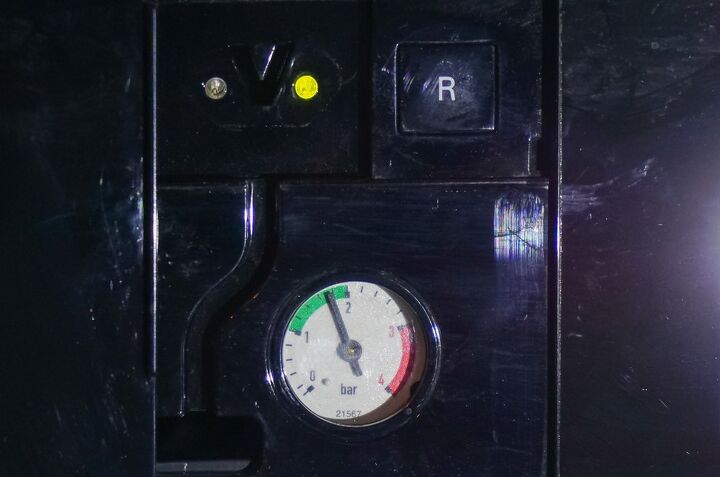Furnace Keeps Shutting Off And Needs To Be Reset? (Do This!)

The reset button on your furnace is a quick method to solve any short-term issues. But if your furnace keeps shutting off and requiring resets, this is a sign of deeper problems. Given that this is a fairly common problem in oil furnaces, we will be focusing primarily on solutions for those.
Press the RESET button on your furnace, and turn off your furnace from the breaker if it doesn’t help. Check to make sure that there is fuel in the tank, and inspect your flame sensor for debris. Clean the flame sensor and air filter, and make sure that your fuel line isn’t clogged.
Below, we will go through some detailed troubleshooting steps for why your furnace may need constant resets. While we are focusing on oil furnaces, many of these steps may also apply to other furnaces.
Do You Need Furnace or Heating System Repair?
Get free, zero-commitment quotes from pro contractors near you.

How To Troubleshoot Your Oil Furnace
Follow the below troubleshooting steps to address your oil furnace.
- Try resetting (once)
- Turn off your furnace
- Check your fuel level (oil only)
- Look at your flame sensor
- Check the airflow
- Check your fuel line
- Look at your thermostat
- Look for corrosion and signs of age
Step One: Reset Your Furnace (Once)
When your reset button first pops up, your first reaction should be to press it. When you see it, that means that a system inside or your furnace believes that this is the best solution.
Start by trying to reset your furnace once. If you run into the same problem, that means that the issue comes from something that a reset button cannot handle. If you have the urge to press it again, do not do it more than twice. Your reset button typically hits the ignition area with oil, causing it to ignite. If your oil isn’t igniting, you may be creating a bigger flame for later.
Step Two: Turn Off Your Furnace
The right troubleshooting processes begin by turning off your furnace. If you need to make a repair or clean, do this before you start. Better yet, turn off your furnace from the breaker. Turning off the electricity will prevent you from being electrocuted, which is typically a good thing.
Step Three: Check Your Fuel Levels
For those used to a gas furnace, refilling your oil is one of the trickiest things to remember. The same logic applies if you use propane heating measures. Start by checking your oil storage tank. If it is empty, you need to refill it.
To prevent this issue from regularly cropping up, contact a local company for regular service delivery. How often you need it will depend on the size of your tank. Most companies will have this knowledge on hand. If you need to track the oil and pick it up yourself, try and measure how much oil you use per day. You can do this by regularly checking the tank at the same time every day.
Given that most tanks use around 4 gallons of oil a day, It is safe to assume you will be going through 125 gallons of oil per month. So if you have a 250-gallon tank, fill it during the same day every two months. Do not allow the tank to get empty. If it does, you will need to contact a specialist to help you restart your oil furnace not to be damaged.
Don’t Want to Read the Rest? Watch this Video
Step Four: Look At Your Flame Sensor
Much like gas furnaces, your oil furnace has a flame sensor. Just like all flame sensors, they do have a habit of getting dirty. It would be best if you got into a habit of checking and cleaning your flame sensor every six months. You can clean them using anything from a stiff brush to a piece of steel wool.
Your owner’s manual may have a different opinion on that, so be sure to check with your manual before cleaning. Checking your burner also falls under checking your flame sensor. While you are there, be sure that there is no dust or corrosion. Anything in this area can cause a failure to ignite.
Step Five: Check The Airflow
If your furnace cannot breathe, it cannot produce the air it needs to ignite. As a result, cleaning your flame sensor should also come with cleaning the rest of your furnace. Be careful to run a cloth along the entirety of the surface. Try not to leave any dust behind.
Apply the same logic to the ventilation system. Pull out the air filter to see if it has gone grey. If needed, take down the air filter dimensions and go to the hardware store for a replacement. Try and vacuum and dust as much as you can while replacing the air filter. You want to be sure that you place your air filter in a clean location.
Step Six: Check The Fuel Line
Whether you are talking about lawnmowers or vehicles, a clogged fuel line is a common enough occurrence of anything that uses fuel. Because of this, you will also want to check the fuel line of your oil furnace.
Check the valves along your fuel line to be sure none of them are closed. Typically that means that the valve is in the wrong direction. Turn the valve until it opens up. You should be able to hear the flow again. Do not reopen the flow with the furnace online; this could cause potential fuel issues.
Step Seven: Look At Your Thermostat
All modern furnaces have access to a thermostat. A thermostat tells your furnace when to start and when to stop. As a result, it is pretty easy to see how a thermostat may fail to communicate with your furnace. At this point, check to see if your thermostat is showing any error codes. There may be an issue that is pretty easy to find with your thermostat.
If no error codes are popping up, check to see if the thermostat is at your preferred temperature. If it is too low, the thermostat will repeatedly turn off. However, this is not a sign that you should reset your furnace. If a temperature adjustment doesn’t work, clean the surface and the inside. Wires covered in gunk may not communicate well with your furnace.
If you have an old-style mercury thermostat, it might be time for a replacement. If you insist on keeping it, be sure that the mercury is level. If it is off-balance, your mercury will not be able to read the temperature.
Step Eight: Look For Corrosion And Signs Of Age
As you are going through the troubleshooting steps on this list, be extra careful to find anything rusty. Older systems may not age well, which will cause significant issues if not treated immediately. If your system is older, rust is a good sign that you need to make a replacement. Corroded metal can cause an accidental release and a dangerous situation.
If your system is newer, rust may sign that you have too much exposure to moisture. Check to see if there are any nearby leaks and patch them. Consult with a technician to see if you need to go into any detailed repair.
What If My Gas Furnace Keeps Shutting Off And Needs To Be Reset
Many of the steps mentioned above still apply. Here is a quick run-through of what you need to check.
- Airflow
- Flame sensor
- Age
- Corrosion
- Thermostat
When including gas furnaces, the flame sensor is the most common error. Use steel wool or a rigid brush to remove any excess grime buildup. Your gas valve may also be failing to open up. Start by cleaning the gas valve. If that doesn’t work, consult an HVAC technician to see about a replacement.
Given that gas valves are pretty expensive, you may want to replace the entire furnace at this point. Otherwise, check your warranty if your gas valve has gone out, as they typically last up to ten years.
What Is Short Cycling?
If your heater is turning off before it reaches its full heating cycle, this is known as short cycling. Your HVAC technician will use the terminology, meaning it is essential to know. Short cycling typically happens when your furnace overheats. Overheating is caused by low airflow, one of the areas we had you check in the above troubleshooting steps.
If you have gone through all of the steps above, your heater may be too large for you. If you feel that your home gets hot too quickly during this shutoff, that may be a cause. If your HVAC technician informs you of a large heater, ask them to explain their reasoning. In this case, your only real solution is to make a replacement.
Do You Need Furnace or Heating System Repair?
Get free, zero-commitment quotes from pro contractors near you.

Related Questions
Oil vs. Gas Furnace -Which Is Better?
Typically, gas furnaces will provide you with better overall cost-efficiency. Maintenance and cost of fuel are far lower, but the upfront investment of a gas furnace is much higher. Oil furnaces cost less to purchase, but they require more maintenance and their fuel source costs much more money. However, they are also known to provide a great deal of heat.Gas furnaces are better if you have a steady source. Oil furnaces are better if you are willing to put up higher overall expenses for more significant heat.

I'm a guy who becomes the expert of whatever I stumble upon, writing-wise. I've written tons about cool home products, home improvement, and smart technology in the home. I'm also the proud father of a kiddo born on new years, making my holidays very busy.
More by Eli Smith











![How Much Weight Can a 4×4 Support Horizontally? [It Depends!]](https://cdn-fastly.upgradedhome.com/media/2023/07/31/9070333/how-much-weight-can-a-44-support-horizontally-it-depends.jpg?size=350x220)

![The 10 Best Table Saws - [2022 Reviews & Buyer's Guide]](https://cdn-fastly.upgradedhome.com/media/2023/07/31/9070645/the-10-best-table-saws-2022-reviews-buyer-s-guide.jpg?size=350x220)

![Cost To Drill A Well [Pricing Per Foot & Cost By State]](https://cdn-fastly.upgradedhome.com/media/2023/07/31/9074980/cost-to-drill-a-well-pricing-per-foot-cost-by-state.jpg?size=350x220)




![10 Most Dangerous Neighborhoods in Baltimore [Updated]](https://cdn-fastly.upgradedhome.com/media/2023/07/31/9075655/10-most-dangerous-neighborhoods-in-baltimore-updated.jpg?size=350x220)






